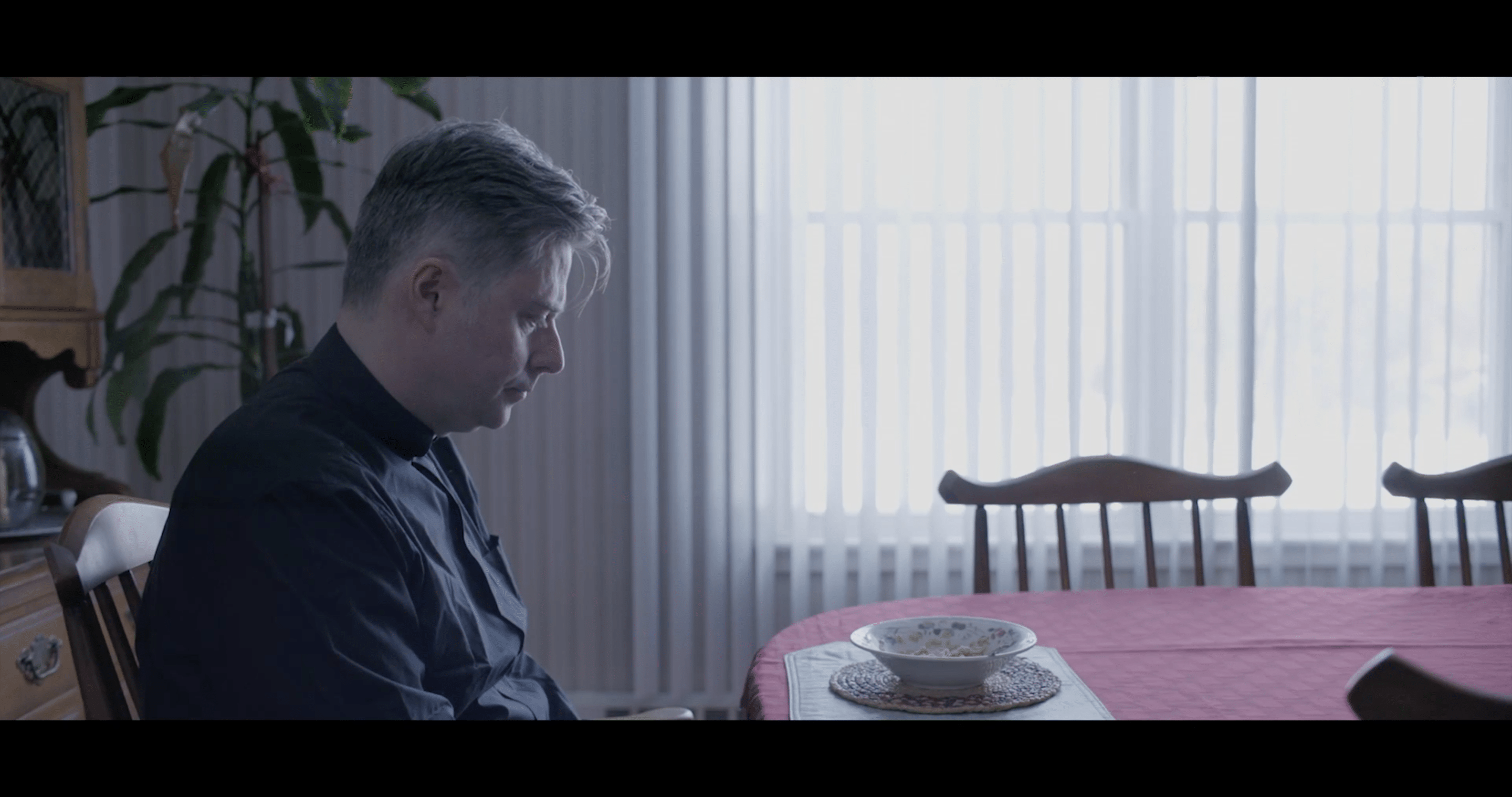
In every movie there comes a turning point or realization for the character where they know what happens next can change their fate or affect those they care about. In this scene from my groups short film thesis Acts of Contrition, we see Father Don sitting alone as stares down at his breakfast. What makes this image so powerful and the center of all our marketing materials is the sign of building emotion in his facial expression which helps to give movement to the still image. This revealing moment shows how vulnerable Don is after his world comes to a halt and he is left to reflect on everything that has lead him to this point but now he must face it alone. There is no warm lighting to show comfort in this scene, instead it is the harsh cold light from outside that helps to cast a shadow but also outline him.
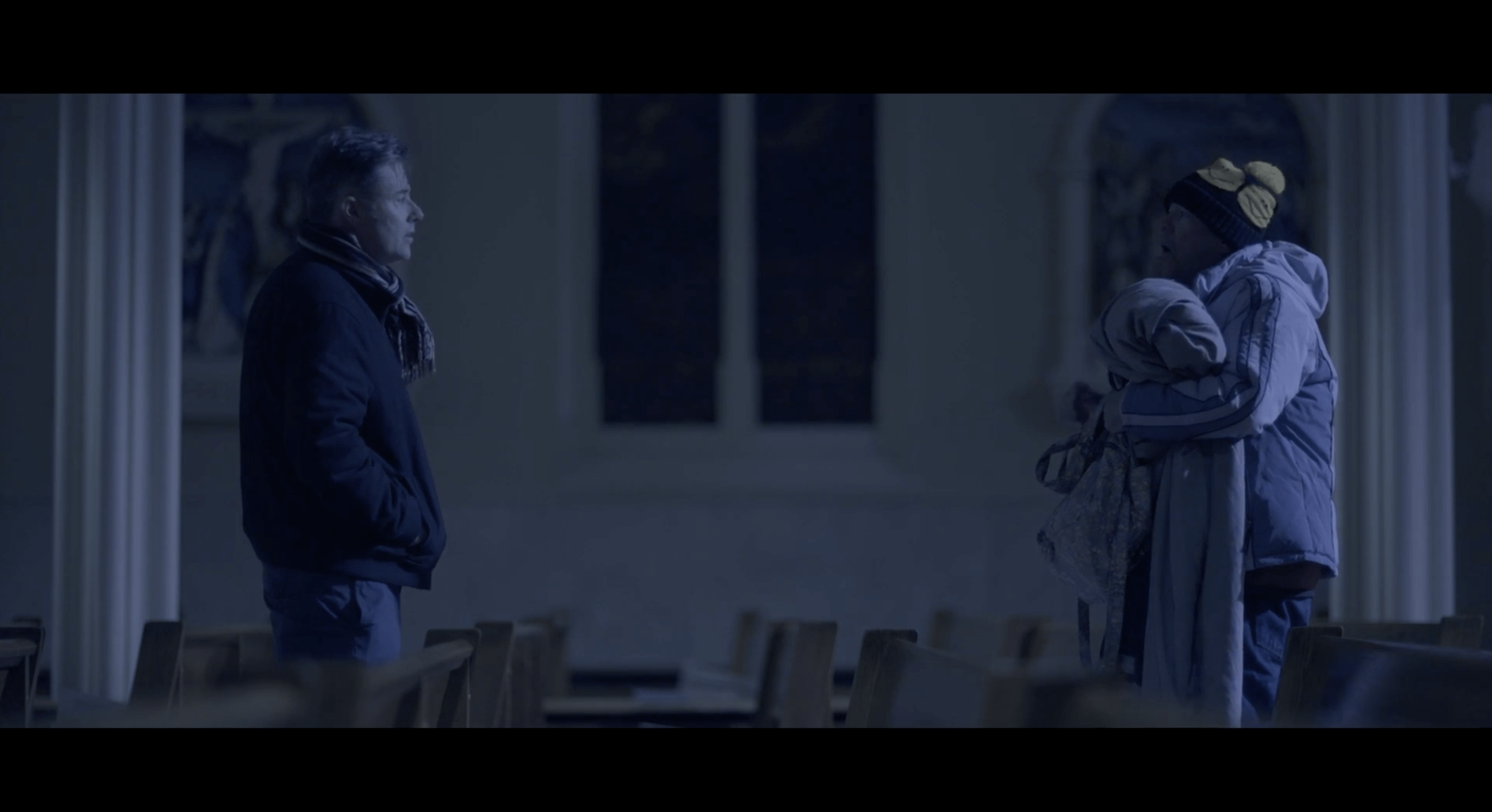
The composition of any scene in a story is important when trying to get the right emotion and situation across to the viewers. Words can be read or spoken to tell it like it is but visuals help to present a much stronger case, even though the viewer may not notice it right away their mind is processing the composition of the scene for them. Here again is a screen grab from Acts of Contrition where the priest Father Don is resistant to the idea of having the homeless man Norm stay with him at the rectory. Hence why there is so much distance between them in the frame. The color of this scene also helps to add another element of storytelling to this image as color can help add to the mood and meaning. Here we see the scene darkened, because it takes place at night, but the hints of blue light also help to add to the cold and gloom of the scene making the viewers feel empathy for Norm being left in the cold church.
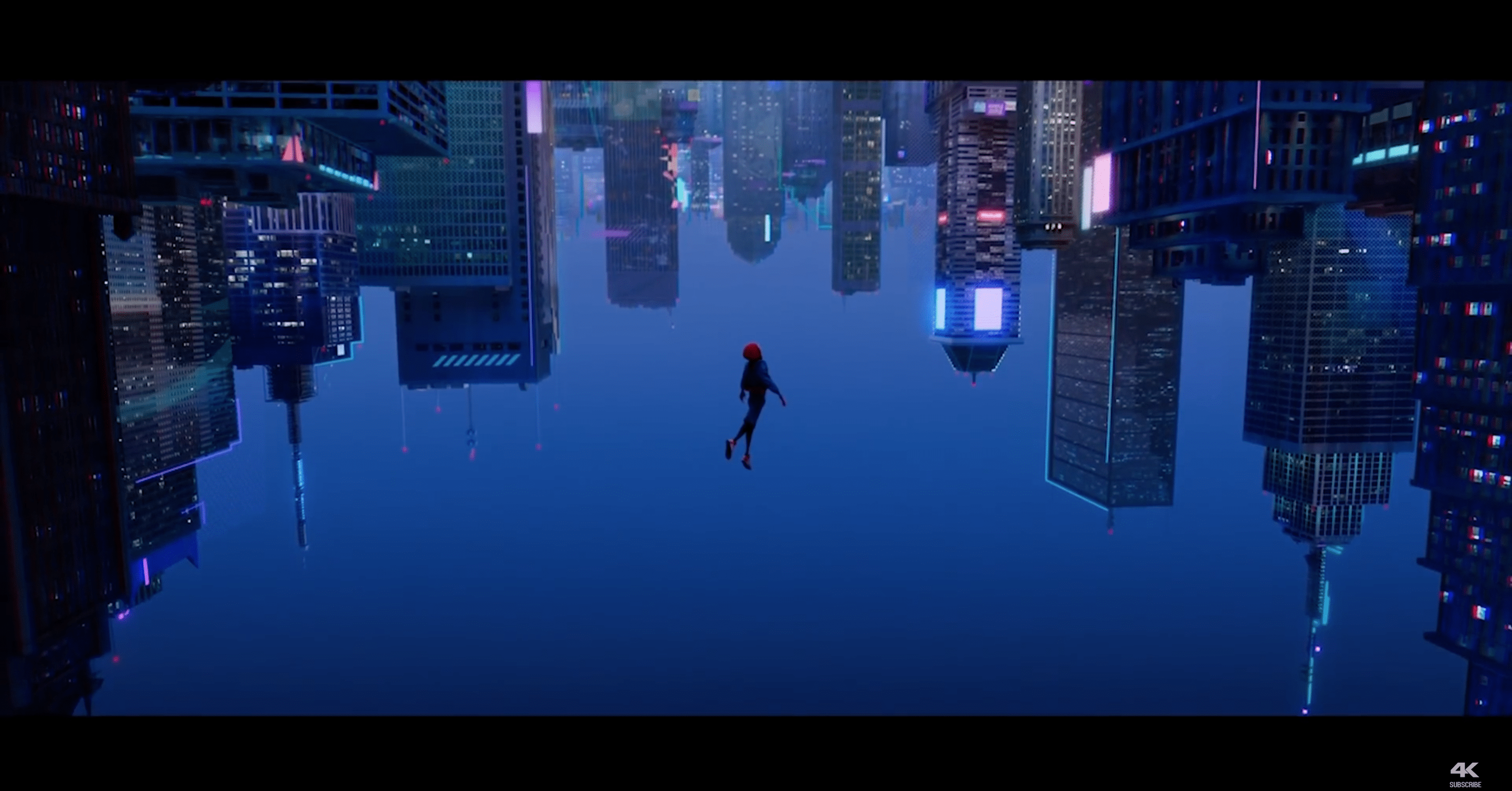
When visual storytelling in movies comes to mind this image is one of the first things I picture. Spider-Man: Into the Spider-Verse took the animation world by storm with its revolutionary animation techniques but more importantly its visuals and thematic elements for its characters. “Powerful imagery allows the narrative to transcend into the hearts and minds of the audience” (Gitner). One of the main themes of the film is taking the leap of faith, and when the main character Miles Morales finally takes his leap of faith, he realizes that he isn’t falling but instead rising up based on his perception.
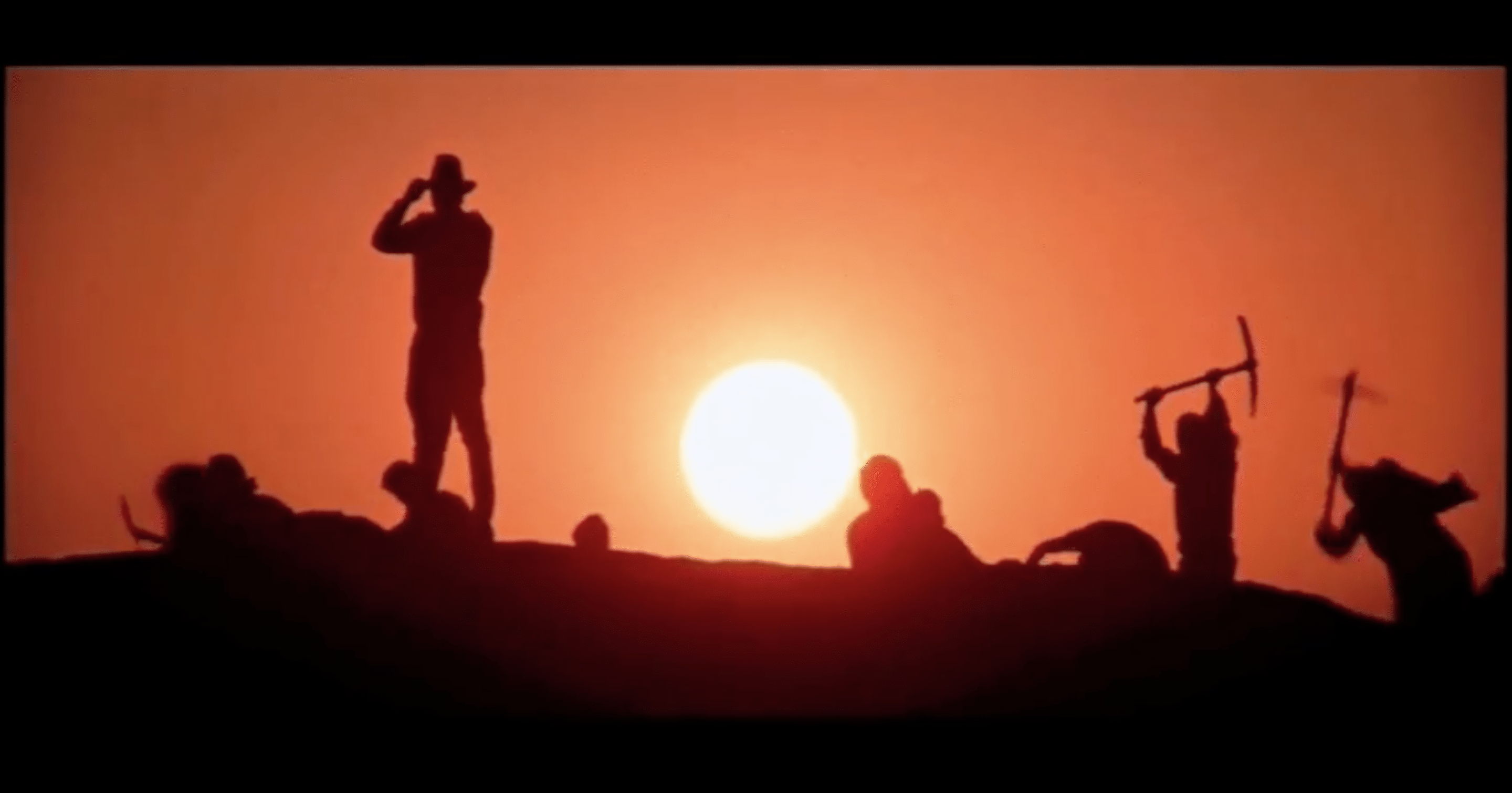
When silhouettes are used in photos they help to add another layer of emotion and sometimes drama to the scene. It can make a person seem menacing or heroic depending on how the photo is captured and the motive of the visual storytelling. According to Gitner, a silhouette is made when a foreground subject is exposed against a brighter background, which in turn makes the subject darker compared to the background. In this frame from Raiders of the Lost Ark, the passage of time is shown by having the silhouettes of Indiana Jones and his crew of diggers outlined by the setting sun over the desert. This helps to show that they have worked all day and plan on going all night in their pursuit of finding the Ark. The silhouette works here for Indiana Jones because of his iconic stance and look with his hat which is characterized early on in the film as a must-have for him. And rather than have a normal shot of the desert like other movies, there is an emphasis on the setting sun which helps to outline the dust and sand picked up by the pickaxes to help transport the viewer into the desert for this scene.
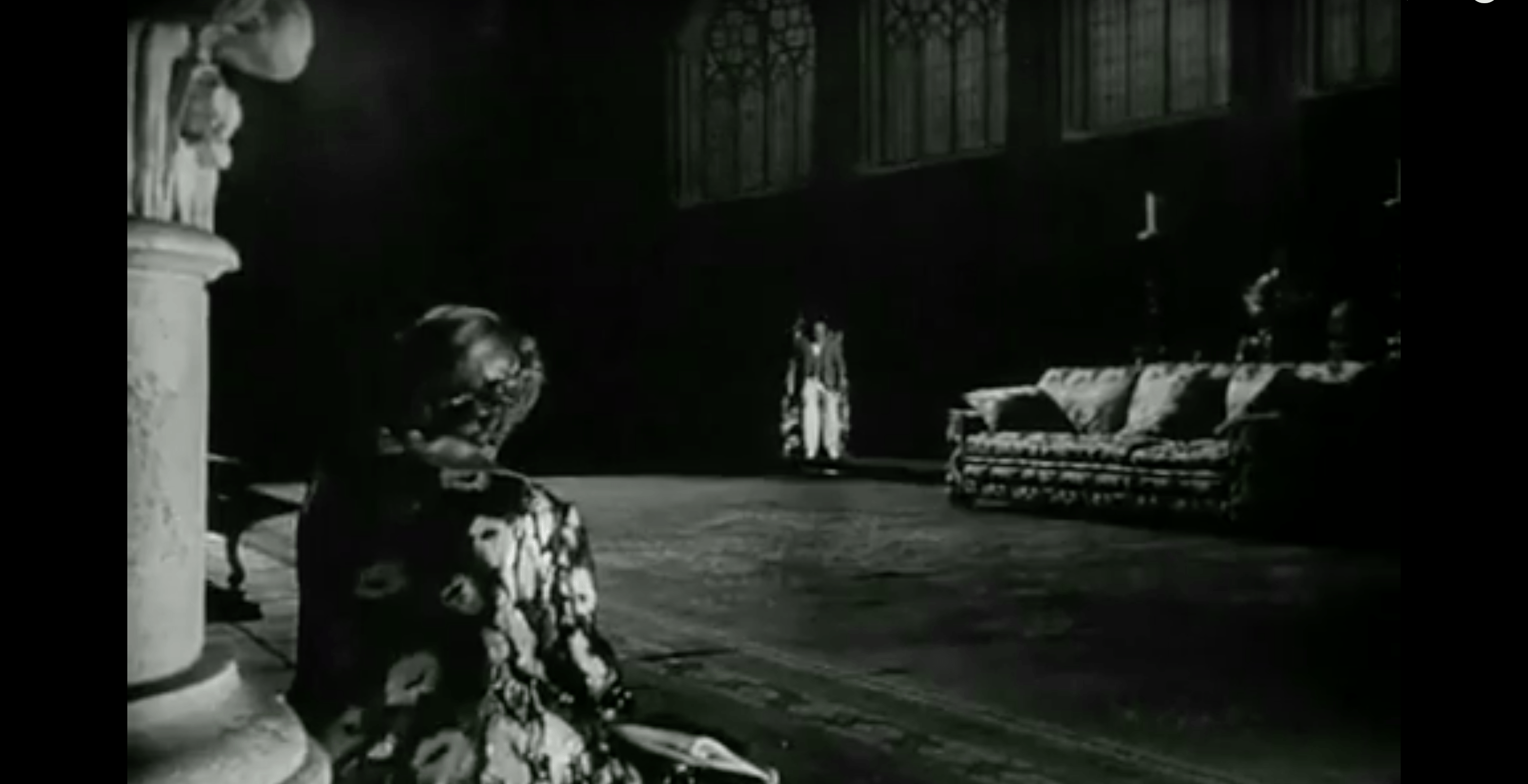
The film Citizen Kane is regarded by many as one of the greatest films of all time. What helped make this a revolutionary and first of its kind film that many refer to in their own work is its unique storytelling through visuals which is accomplished through techniques such as deep staging. Here we have Kane sitting far away in the background of his chair while his wife sits in the foreground trying to speak to him. Between them is an empty couch big enough for both to sit on but they choose to remain separate from one another. The room remains darkly lit except for the spotlights on the characters and the couch which just steps out of the shadows to make out its shape. Looking again at the examples given in The 4 Principles of Visual Storytelling, this image helps to relevancy and archetypes because the scene creates interest in wondering why the characters choose to remain so far apart and what the scene says about how each character is perceived by everyone.
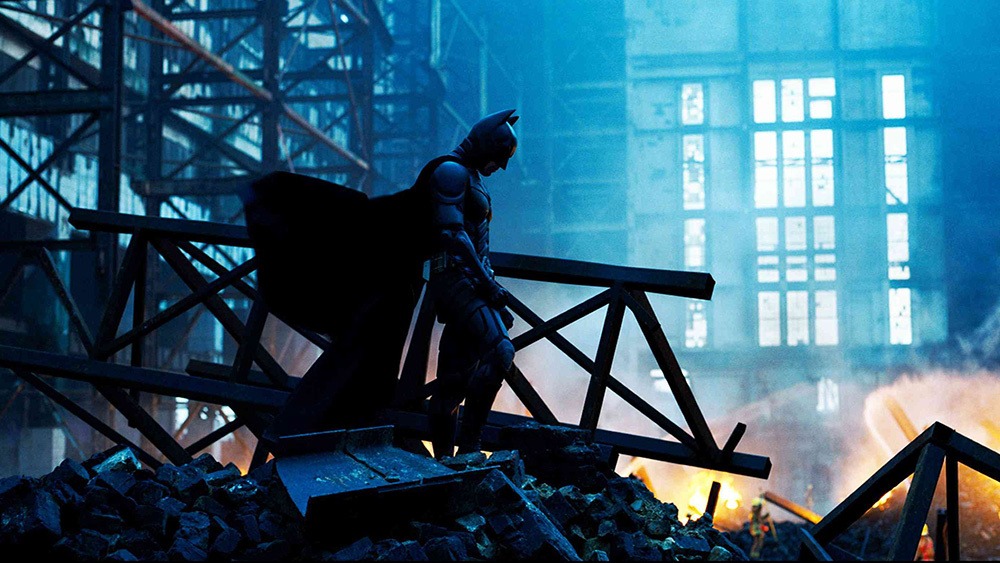
Bo Bergstrom in his article Essentials of Visual Communication talks about how viewers feel part of the action within a scene when they can relate it to their own personal experiences. Nobody is perfect and everybody has to face the challenges and obstacles that life throws at them, which is why it is important for character in film to have these moments. In this scene from The Dark Knight, Batman stands in the shadows and smoke from his defeat after letting one of his closest friends die at the expense of his failure. He looks down staring at the rubble and is framed up in the scene by debree as the fires still burn behind him. It is these moments in storytelling where people can tell how the character is feeling in this moment but ask what will they do next to combat these feelings and rise from the ashes as the world still shines down a light from above.
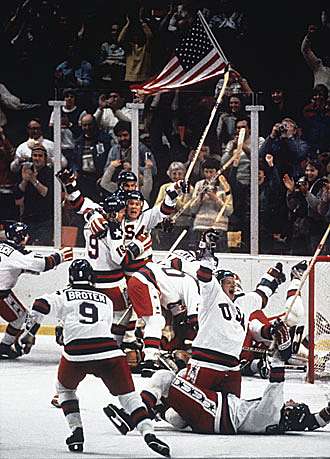
Every photographer is always looking for that moment when the boxer lands their knockout punch or the basketball players shot falls through the net as time expires. Gitner describes this moment as the single point in time when the action is stopped and tells the entire story in just one frame of the picture or video. And that is exactly what happened when this photographer captured the 1980 U.S. Olympic Hockey team defeating the powerhouse USSR for the gold medal. Perhaps it is the players on the ice rejoicing and celebrating the journey they just went on together that tells the story, or more importantly the U.S. flag waving in the background representing everything they believed in and fought for to get them to this point.

It is one thing to capture any picture of a historical moment and have it be significant, but if you wait for the right moment and see the right body language in the subject to help gain the same emotion for the viewer then it helps to tell the whole story in seconds. People are able to register pictures far more quickly than words which is why when Tiger Woods won his first Masters jacket in over a decade this picture was all over the news and in every magazine. There is no need to see his facial expression to know how he was feeling in this moment as he looks on at the crowd which celebrated his historic win with him.
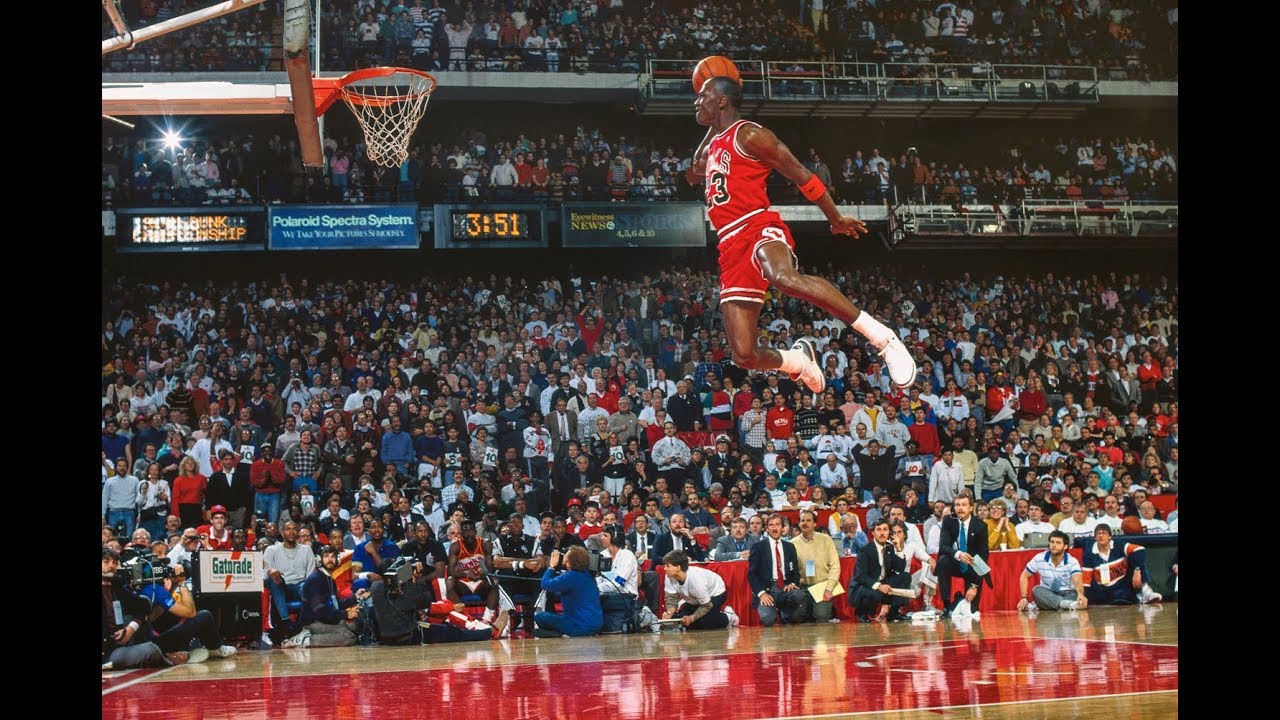
The photo was taken of Michael Jordan during his famous dunk contest in 1988 when he took flight. This image of Jordan flying not only shocked the world but it also helped to launch his brand of shoes with Nike and became the legendary Air Jordan logo so many people see today. As Jessica Gioglio states in her article the Power of Visual Storytelling, storytelling needs a “show, don’t tell” approach that helps to generate more engagement and conversation among viewers. Although Jordan is the center of this photo, it is the reaction of the crowd members in the background that help to make the viewer feel like they were right there courtside to see this legendary dunk for themselves
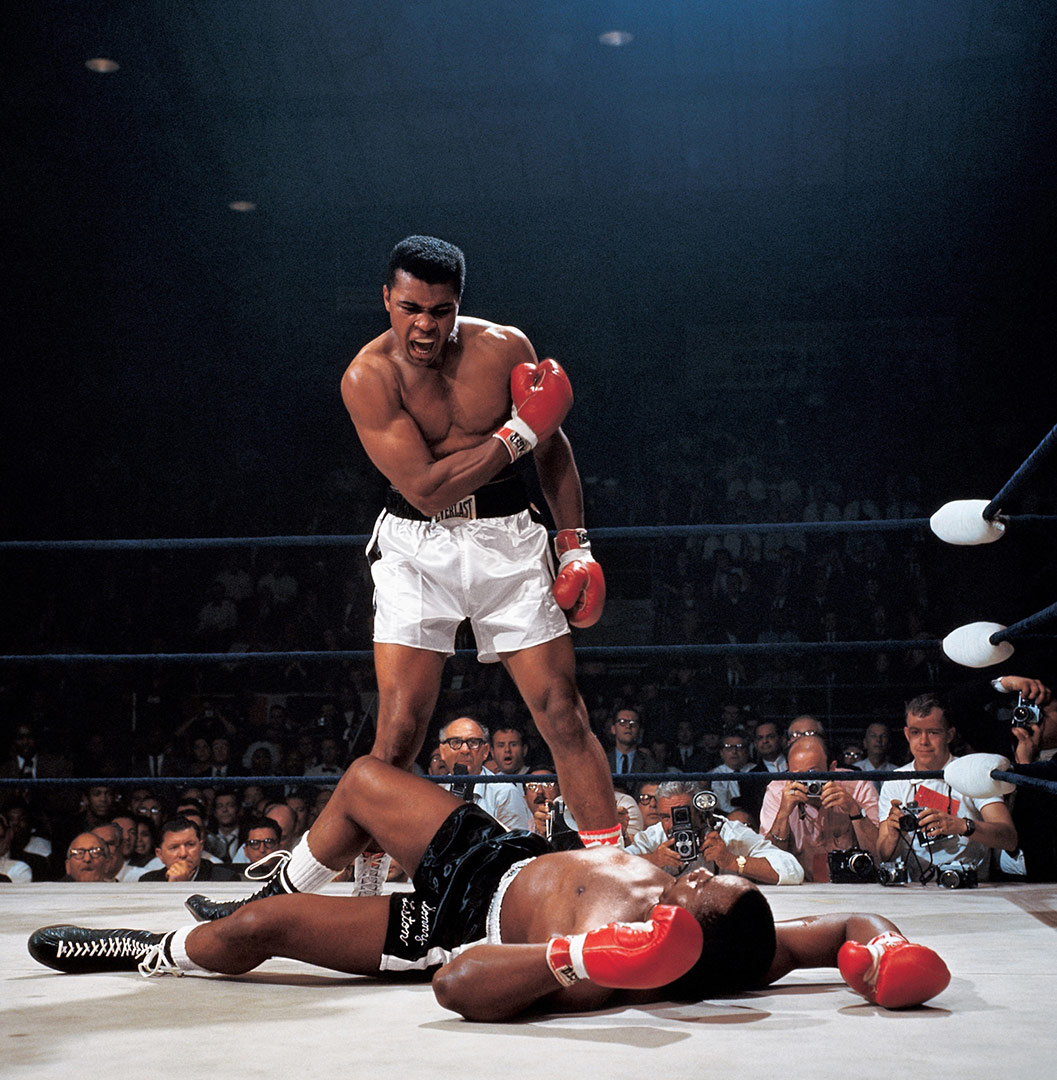
Going back to the single frame that tells the entire story, this picture does just that as Muhammad Ali knocked out Sonny Liston in one of the biggest sports moments of all time. People always see the moment where the big knockout punch is landed, but it’s what happens after the fact that always has people wondering what happened next and this photographer captured just that. The angle of this photo was perfect as Ali stands over Sonny taking the higher ground and cvictorial pose as the spectators looks on in the background and the light comes shines down on Ali’s shoulders.
Works Cited
“Chapter 1 In What Ways Do We Think about Visual Storytelling Every Day.” Multimedia Storytelling for Digital Communicators in a Multiplatform World, by Seth Gitner, Routledge, 2016.
“Chapter 1: The Rise of Visual Storytelling.” The Power of Visual Storytelling: How to Use Visuals, Videos, and Social Media to Market Your Brand, by Ekaterina Walter and Jessica Gioglio, McGraw-Hill, 2014.
“Chapter 2 Storytelling.” Essentials of Visual Communication, by Bo Bergström, Laurence King, 2009.
Klanten, Robert, and Andrew Losowsky. “Visual Storytelling: Inspiring a New Visual Language.” Visual Storytelling: Inspiring a New Visual Language, Gestalten-Verl., 2012.
“Worth 1,000 Words: The 4 Principles of Visual Storytelling.” Action Graphics, 26 July 2018, actiongraphicsnj.com/blog/4-principles-visual-storytelling/.





As someone who did all of their photos on film shots, I very much enjoyed reading your takes on these pictures. Plus I love the touch of adding iconic sports images into the mix as well. I am biased on the first two shots, but I just loved how you explained the emotion and intention behind each of the two. I honestly couldn’t have worded it better myself. I also am a huge fan of “Into the Spider-Verse” so I loved the choice of that amazing shot even though you can probably grab any shot from that film and do a whole analysis on it. I think the shot from “The Dark Knight” is great too since I always felt that shot had so many layers of emotion in it, from the body language of Batman to the wreckage he is on to the fires in the background. It always stood out to me as more of a painting rather than a scene from a film.
Bret,
Again, another fantastic job carefully selecting images that tell powerful stories. I believe that the 10 images you chose from movies or iconic sports moments are perfect examples of images that get a story across in one single motion. In each of these images, you can almost feel the emotions come off the screen, and you want to cheer or cry with the subjects.
The one picture that stood out to me was your Spiderman: Into the Spiderverse screen grab. I never thought of this part of the movie the way you described the screenshot in your description, but after reading that and viewing the photo again, it makes complete sense. It takes Miles a long time to realize that he can trust himself and his powers to become this world’s Spiderman. Once he takes the leap of faith, he finds he is almost flying into a new life for himself, not falling. I think the way you describe this moment is correct, especially the fact that Miles has found his way into the viewer’s heart, especially at this moment.